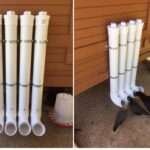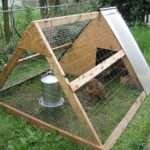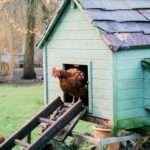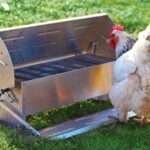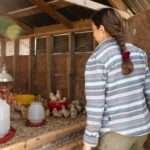When it comes to keeping chickens, providing them with a suitable feeder is crucial for optimizing their feeding efficiency, minimizing waste, and ensuring their nutritional needs are met. With a wide array of feeder options available, including DIY solutions, PVC pipe feeders, hanging feeders, automatic feeders, and more, it can be challenging to determine which one is best for your flock. In this comprehensive guide, we will delve into the benefits, drawbacks, and specific details of different chicken feeder types. We’ll cover cost considerations, contamination prevention, ease of use, storage capacity, and more. By the end, you’ll have a clear understanding of the various feeder options and be able to make an informed decision that suits both your chickens’ needs and your convenience. Let’s begin our exploration of the best chicken feeders available.
1. DIY Chicken Feeder: Cost-Effective Solutions with Customizability
DIY chicken feeders offer cost-effectiveness and the ability to customize them according to your flock’s unique requirements. Here are a few popular DIY options to consider:
- PVC Chicken Feeder: Constructing a chicken feeder using PVC pipes is a common and practical DIY approach. By cutting and connecting PVC pipes, you can create a gravity-fed system that provides feed on demand. This design allows you to control the flow of feed, minimize waste, and reduce the risk of contamination. PVC feeders can be easily customized to fit the specific size of your flock and the space available. You can find PVC pipes and fittings at your local hardware store or online.
- Homemade Chicken Feeder: Another cost-effective option is to repurpose materials from around the house to create a homemade chicken feeder. For instance, you can use buckets, containers, or even recycled kitchenware. This approach not only saves money but also helps reduce waste. However, it’s important to ensure that the homemade feeder is sturdy, easy to clean, and able to protect the feed from contamination. Avoid materials that may leach chemicals into the feed, such as certain plastics or metals.
2. Automatic Chicken Feeder: Convenience and Efficient Feeding
Automatic chicken feeders offer convenience, reduce the frequency of refilling, and prevent waste. Consider the following options:
- Treadle Chicken Feeder: Treadle feeders are designed with a footplate mechanism that opens the feeder’s access points when a chicken steps on it. This design effectively prevents wild birds and pests, such as rats, from accessing the feed. While treadle feeders tend to be relatively more expensive, they offer efficient feeding control and reduce the risk of contamination and waste. Look for treadle feeders made from durable materials like galvanized steel or high-density polyethylene (HDPE).
- Gravity or Timer-Based Automatic Feeders: These feeders work by releasing a predetermined amount of feed at regular intervals. Some models are gravity-based, while others have timers that dispense the feed at set times. Automatic feeders provide convenience and reduce the need for frequent manual refilling. However, it’s important to ensure that the feed remains dry and protected from pests and weather elements. Look for automatic feeders with built-in rain covers, drainage systems, or moisture-blocking features.
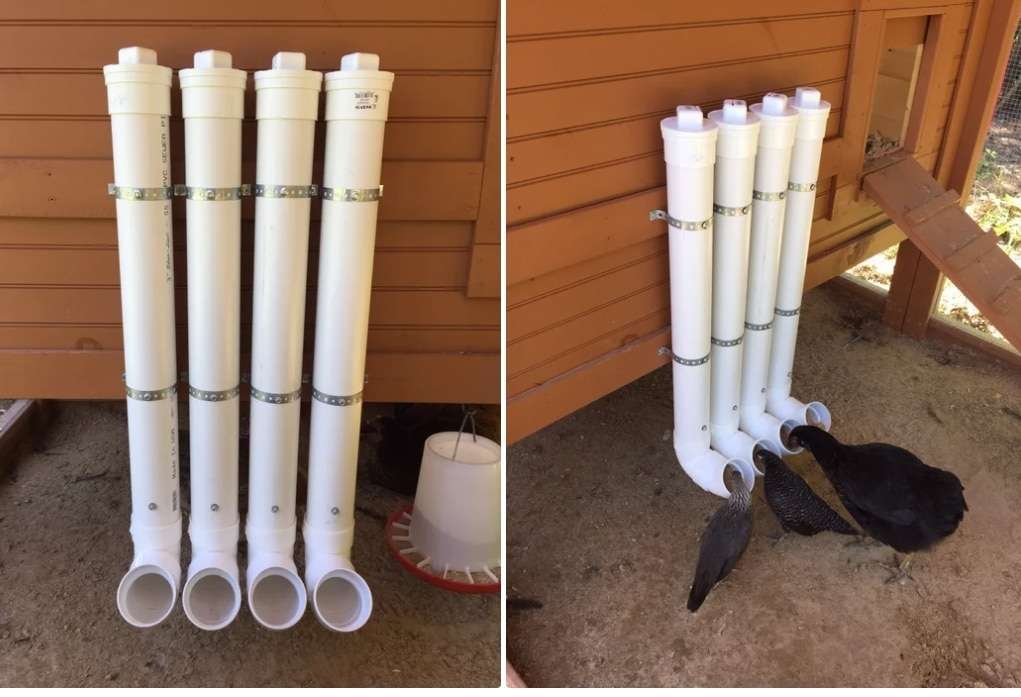
3. Hanging Chicken Feeder: Space-Saving and Versatile
Hanging feeders are popular options for backyard chicken keepers as they save space, prevent contamination, and provide versatility. Here are a couple of options to consider:
- Hanging Tube Feeder: This type of feeder features a suspended tube with multiple feeding ports. It allows chickens to access the feed without trampling or soiling it. Hanging tube feeders minimize waste, prevent contamination, and keep the feed dry. Additionally, their height can be adjusted to accommodate chickens of various sizes. Look for tube feeders made from durable and UV-resistant materials like UV-stabilized polycarbonate or galvanized steel.
- Hanging Pan Feeder: Pan feeders suspended from chains or ropes are another option. They provide ample space for multiple chickens to feed simultaneously. Hanging pan feeders are easy to adjust and offer versatility. However, to prevent wild birds or rodents from accessing the feed, additional precautions such as baffles or covers may be necessary. Look for pan feeders with removable lids or covers for easy cleaning and maintenance.
4. Considerations for Rat-Proof and Contamination-Free Feeders
Preventing contamination and protecting the feed from pests are important aspects of choosing the right chicken feeder. Here are some considerations:
- Anti-Rat Chicken Feeder: Some feeders are specifically designed to be rat-proof. They feature secure lids or protective barriers that prevent rodents from accessing the feed. These feeders ensure that your chickens’ feed remains clean, uncontaminated, and free from vermin. Look for feeders with built-in locking mechanisms or rat-proof designs.
- Contamination Prevention: Look for feeders with features such as rain covers, drainage holes, or grated openings to prevent water accumulation, mold growth, and feed spoilage. These features also help minimize the risk of bacterial contamination. Consider feeders with removable trays or pans for easy cleaning and sanitization.
- Coverings: Like the purpose of the treadle plate trap door system, having a chicken feeder that can be covered helps reduce loss to other birds and rats. In our own coop, we have a simple block of wood which is placed over the feed tray during the day which forces the chickens to forage and keeps the sparrows out. In the afternoon and at night, the cover is removed to allow the chickens to top up before settling into their roost for the night.
5. Storage Capacity, Ease of Cleaning, and Durability
When selecting a chicken feeder, several additional factors should be considered:
- Storage Capacity: Assess the feeder’s capacity based on the size of your flock and the number of chickens you intend to feed. A larger storage capacity means less frequent refilling and reduced maintenance.
- Ease of Cleaning: Opt for feeders that are easy to clean and maintain. Removable trays, pans, or tubes simplify the cleaning process and help prevent feed residue buildup, mold growth, and bacterial contamination.
- Durability: Look for feeders made from sturdy and durable materials that can withstand outdoor conditions and withstand the pecking and scratching of chickens. Materials such as galvanized steel, HDPE, or UV-stabilized plastics are often recommended for their longevity.
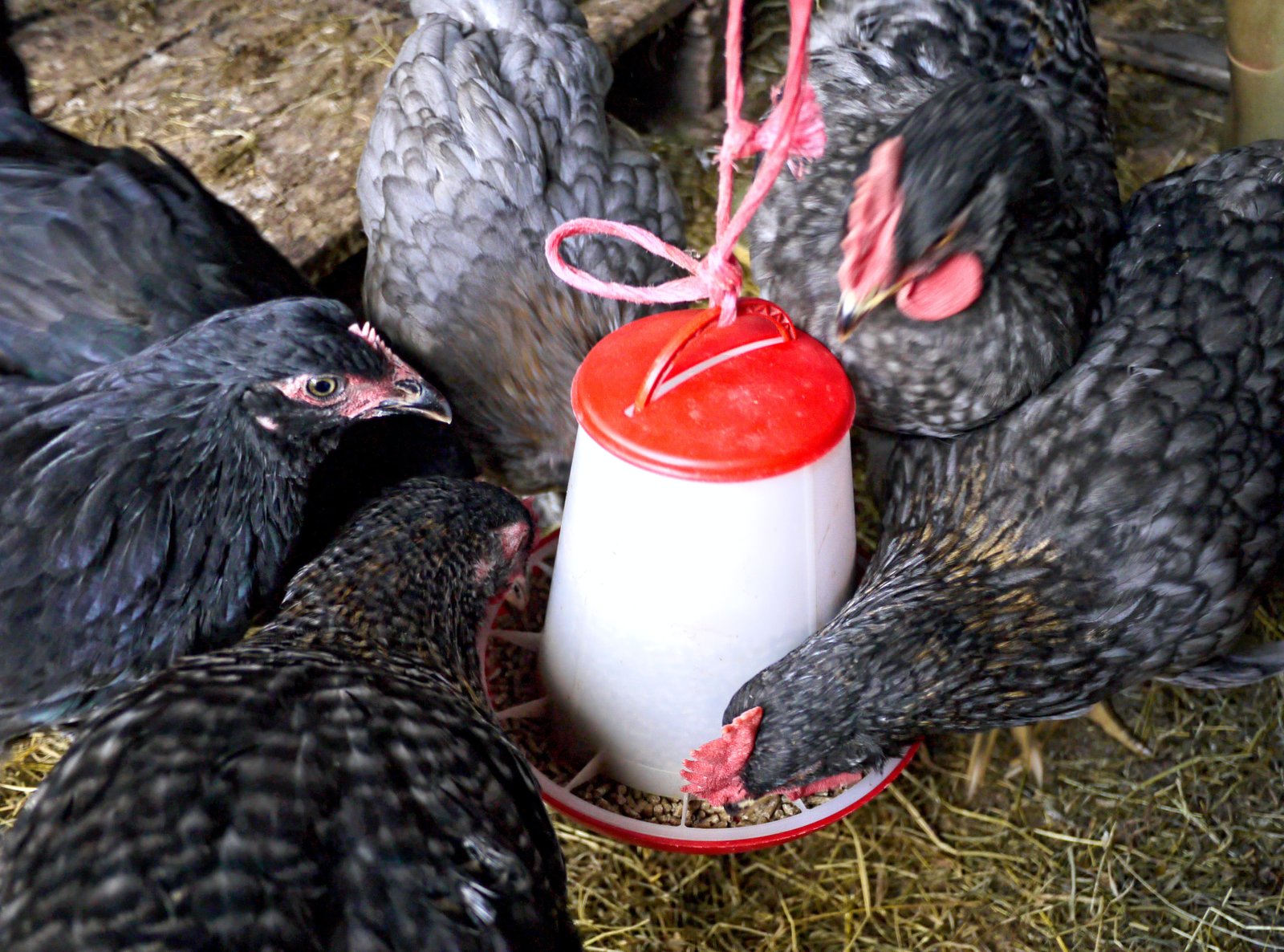
The Best Chicken Feeder for You
Choosing the right chicken feeder is essential for optimizing feeding efficiency, minimizing waste, and ensuring your flock’s nutritional needs are met. DIY feeders, such as PVC pipe feeders or homemade options, offer cost-effectiveness and customization. Automatic feeders provide convenience and reduce the frequency of refilling. Hanging feeders save space and prevent contamination. Rat-proof and contamination-free feeders protect the feed from pests and ensure cleanliness. Consider storage capacity, ease of cleaning, and durability when making your selection. By assessing your flock’s size, specific requirements, and your own convenience, you can choose the best chicken feeder that suits both your chickens’ needs and your own. Happy feeding!

